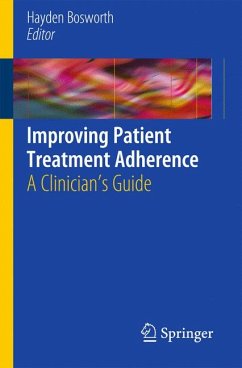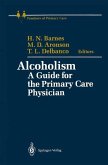Dieser Download kann aus rechtlichen Gründen nur mit Rechnungsadresse in A, B, BG, CY, CZ, D, DK, EW, E, FIN, F, GR, HR, H, IRL, I, LT, L, LR, M, NL, PL, P, R, S, SLO, SK ausgeliefert werden.
"This book examines the impact of patient nonadherence with preventive measures on costs, clinical outcomes, and health-related quality of life. It also explores evidence-based strategies to improve patient adherence. ... The target audience includes primary care practitioners, residents, students, and any healthcare professionals involved in primary prevention. ... Each chapter concisely summarizes current literature and provides helpful, practical, clinical tips. ... Anyone involved or interested in the growing field of preventive medicine also would find it a valuable resource." (Heather Huang, Doody's Review Service, August, 2010)









